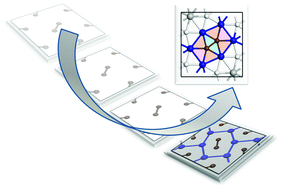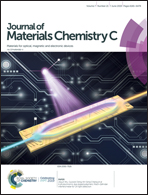TMC (TM = Co, Ni, and Cu) monolayers with planar pentacoordinate carbon and their potential applications†
Abstract
Seeking novel two-dimensional (2D) materials with a planar hypercoordinate motif is always an attractive theme, especially to meet the demand for specific functional applications. Here, we identify entirely planar pentacoordinate carbon (ppC) transition-metal carbide (α-TMC, TM = Co, Ni, and Cu) monolayers in their ground states through the swarm-intelligence structure search method and first-principles calculations. In these TMC monolayers, each carbon atom is bound with four transition-metal atoms and one neighboring carbon atom, forming a hexagonal C2@TM6 subunit in a novel topology. Their excellent structural stability is confirmed by the superior cohesive energy and the positive phonon modes. The lower cohesive energy and thermal stability of the CuC monolayers than those of the CoC and NiC monolayers is interpreted by higher electron transfer and lower electron donation/back-donation between TM and C atoms, which is also confirmed by the SSAdNDP analysis. Their magnetic character is distinct at the spin-polarized hybrid HSE06 level. The CoC monolayers are antiferromagnetic, the NiC monolayers are ferromagnetic and the CuC monolayers are non-magnetic. More interestingly, the unusual C2@TM6 subunit determines the excellent mechanical stabilities of TMC monolayers. Therefore, these three TMC monolayers with diverse electronic and magnetic properties are anticipated to be synthesized and applied in spintronics, electronics and mechanics.



 Please wait while we load your content...
Please wait while we load your content...